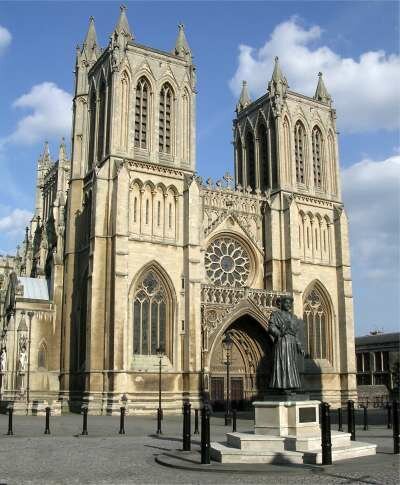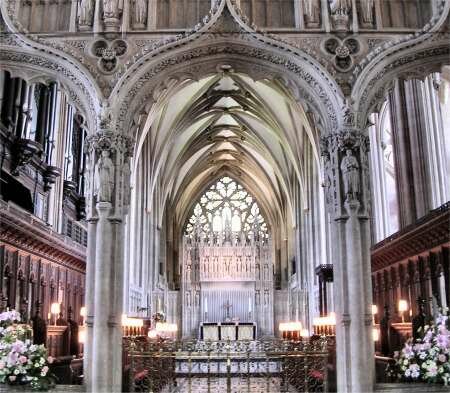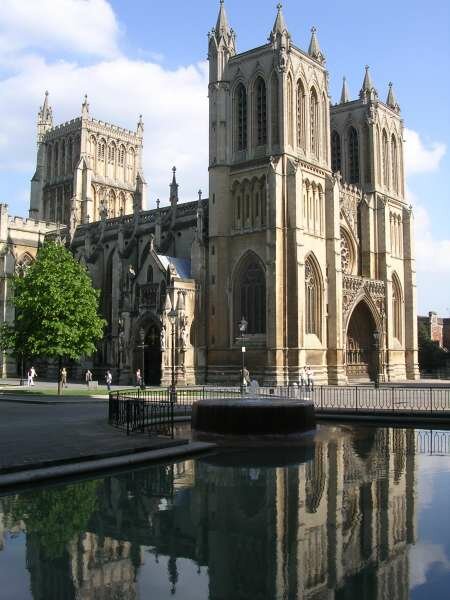Bristol Cathedral Tourist Attractions Bristol
The Ancient Romans founded the city of Bristol in the early IInd Century as a fortified town. Over the next two millennia, it would grow into one of the major ports of the United Kingdom. Much of its wealth was made during the slave trade in the XVIth and XVIIth Centuries. Its current fame is a lively and bustling city. The city is blessed with two cathedrals, although some mistakenly think that there are three. The most famous one is the Bristol Cathedral. Like most Christian buildings of worship, it was built on the remains of Roman sites or temples.
|
Hotels in Bristol | Bristol Cathedral | Clifton Suspension Bridge | Bristol King Street | Bristol Temple Meads | Isambard Kingdom Brunel |
- Cities near Bristol
- Cardiff
- Swansea
- Exeter
- Plymouth
- Bournemouth
- Oxford
- Portsmouth
- Southampton
- Gloucester
- Newquay
- Counties near Bristol
- Somerset
- Wiltshire
- Gloucestershire
- Devon
- Cornwall
- Dorset
- Hampshire
- Oxfordshire
- Gloucestershire
- Hertfordshire
The fame of the Cathedral abd is pull as one of the main Bristol tourist attractions is due to its design. It is arguably one of the finest examples of a hall church in the world. Most observers or readers would not think of churches as halls, but look carefully and you will see why. Beauty can be so simple. Everything is under one immense roof. The nave and side aisles are of equal height, which meant that the structure was visualized as a whole and not in parts. Natural light enters the main space via windowed sidewalls that are as tall as the interior's height.
 |
The cathedral's history is full of both joy and sadness. We do not know what the Ancient Roman ruins are, but some say that St. Augustine met the early Celtic Christians here. As a mark of respect to the Augustinian monks, Robert Fitzhardinge built a Norman abbey for them in 1140. Like people, some abbeys aspire to grow up and become cathedrals. This building would fulfil that desire, although not without some pain and a long wait. In 1165, he would add the Norman Chapter House. Changing status to a church at the beginning of the XIIIth Century, the building grew when the Abbot David finished the Elder Chapel in 1220. The first inkling of a major design change appeared under Abbot Knowle in 1298. His vision would materialize when the Choir and Eastern Lady Chapel were completed in 1330, and the Centre Tower and Transepts in 1480. And when Henry VIII dissolved the monasteries, the abbey was abandoned in 1539 and the nave was demolished.
 |
Three long years would pass before the building was sanctified as the Cathedral Church of the Holy and Undivided Trinity. This brief hope was extinguished for the next three hundred years before new plans were drawn up based on Abbot Knowle's design in 1868. The nave was reopened in 1877 and the two West Towers were completed in 1888. Another architect, J. Pearson would oversee the High Altar and Choir Screen. But, another long wait of 50 years would be required for some of the stained glass windows.
 |
In terms of dimensions, the cathedral is over 91 metres (300 feet) long, of which the nave is 38 metres (125 feet). The nave and choir rise to over 15 metres (50 feet). Look out for the "Harrowing of Hell" made out of Saxon stone during the late XIth Century. Its garden is peacefully attractive if you are looking to escape the madness of Park Street. Cathedrals usually have wonderful acoustics, and Bristol's is an excellent example.